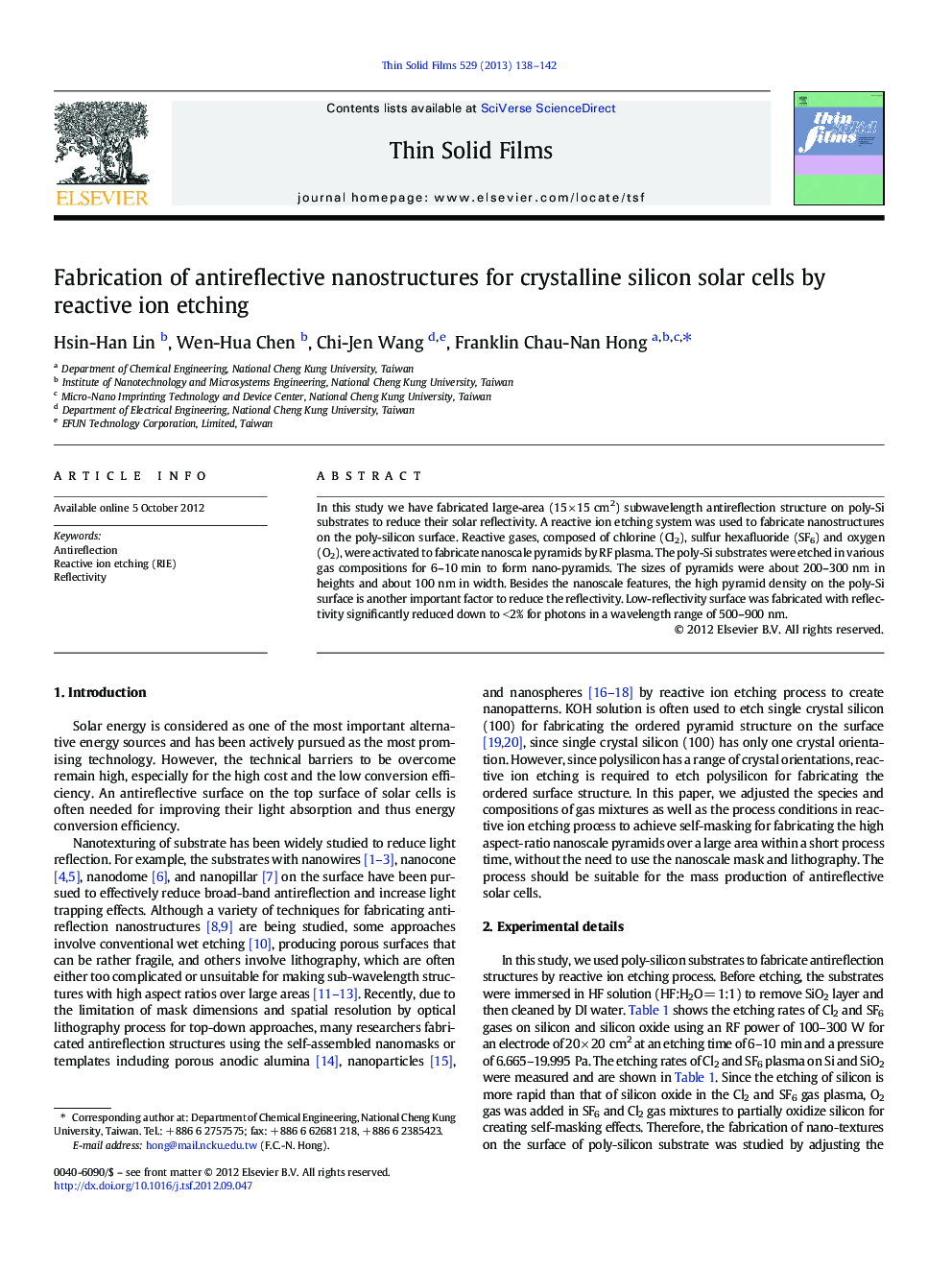| Article ID | Journal | Published Year | Pages | File Type |
|---|---|---|---|---|
| 1666792 | Thin Solid Films | 2013 | 5 Pages |
In this study we have fabricated large-area (15 × 15 cm2) subwavelength antireflection structure on poly-Si substrates to reduce their solar reflectivity. A reactive ion etching system was used to fabricate nanostructures on the poly-silicon surface. Reactive gases, composed of chlorine (Cl2), sulfur hexafluoride (SF6) and oxygen (O2), were activated to fabricate nanoscale pyramids by RF plasma. The poly-Si substrates were etched in various gas compositions for 6–10 min to form nano-pyramids. The sizes of pyramids were about 200–300 nm in heights and about 100 nm in width. Besides the nanoscale features, the high pyramid density on the poly-Si surface is another important factor to reduce the reflectivity. Low-reflectivity surface was fabricated with reflectivity significantly reduced down to < 2% for photons in a wavelength range of 500–900 nm.
► Large-area (15 × 15 cm2) antireflection structures fabricated on poly-Si substrates ► Si nano-pyramids produced by utilizing self-masked reactive ion etching process ► High density of nanoscale pyramids was formed on the entire substrate surface. ► Surface reflectivity below 2% was achieved in the wavelength range of 500–900 nm.
